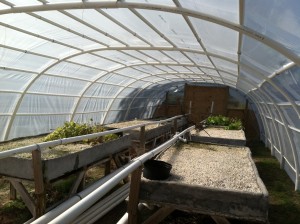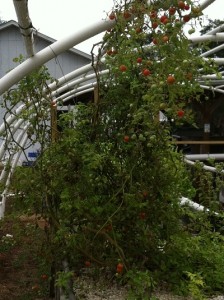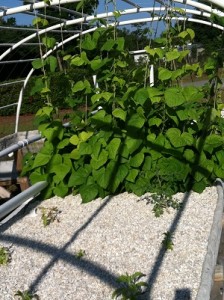One of the keystones of preparedness philosophy is learning and practicing the skills of raising,  slaughtering and preparing or storing animal protein. Traditionally this has been in the form of chickens and rabbits, or larger animals like cows and pigs however fish can also be raised to support a families dietary needs. In this article I will give you a quick look at an easy and scalable way to do this right in your backyard.
slaughtering and preparing or storing animal protein. Traditionally this has been in the form of chickens and rabbits, or larger animals like cows and pigs however fish can also be raised to support a families dietary needs. In this article I will give you a quick look at an easy and scalable way to do this right in your backyard.
No one would argue that a retreat property with a decent sized pond on it would be a great asset to a homesteader’s attempt at self sufficiency however, if you don’t have a pond you can still raise the fish if you know how to build an aquaponics system.
Just like with any other pillar of self-sufficiency there are both benefits and challenges to aquaponics:
|
Benefit |
Challenge |
| Aquaponics systems can be fairly simple to construct since they are made of common and inexpensive materials like wood, cement and PVC, and they can have a long life-cycle and a relatively low daily maintenance depending on materials used and system configuration. | On the other hand there is some initial cost in the construction, the amount depends on materials and configuration. And there can be quite a bit of sweat equity needed at the beginning. |
| Aquaponics systems can be fully controlled. You know what is in the water, you know what the fish are fed, and you know what is in the “soil” in which the plants grow. |
You must be extremely careful that what you add to the plants (fertilizers, insecticides, etc.) are not harmful to the fish. Also, the water must be amended if the the plants are to be in top health. |
| Aquaponics systems are not expensive to run. A medium sized system with a 50’x25′ footprint has the capability of raising 200 lbs of fish and having 192 sqft of organic garden space is all run with a medium sized fountain pump. | The water MUST flow! If the pump stops for very long the water will not be cleaned or aerated and the fish will die, and of course electricity is needed to run the pump. |
| An aquaponics system can also be built inside a building, even in a basement, out of prying eyes. This might also be part of a preparedness strategy if you thought you might be caught indoors for a extended time. | There will be the added cost of appropriate “grow light” illumination. Also, you may be suspected of growing pot since this is a technique frequently deployed by marijuana growers. |
| AP systems use 80% less water than traditional dirt gardens. |
Any water entering the system, like the water being used to top off the system must be analyzed to ensure that there is no chlorine, and the pH is is acceptable. |
|
Fish and vegetables raised in this system are raised without synthetic fertilizers, pesticides, or herbicides. |
A traditional dirt garden can produce a wider variety of vegetables. Not all vegetables thrive in an aquaponics system. |
 An epiphany that I have made since starting my aquaponics system two years ago is that it should not take the place of a standard garden if traditional gardening is an option. As hard as it is for me to say, and though there is a lot of flexibility in aquaponics, it does not easily lend itself to the growing of many commonly grown and desirable vegetables.
An epiphany that I have made since starting my aquaponics system two years ago is that it should not take the place of a standard garden if traditional gardening is an option. As hard as it is for me to say, and though there is a lot of flexibility in aquaponics, it does not easily lend itself to the growing of many commonly grown and desirable vegetables.
While I’m sure there is someone out there who will debate me on this I have found AP systems great for green leafy crops but are temperamental when it comes to fruiting plants and downright stubborn when it comes to root crops!
If you want success I recommend, Cucumber, and Cantaloupe, maybe Cherry tomatoes, if the temps won’t get too warm, or if you want to hold out to late Summer. Plants like Swiss Chard, leaf lettuce, Collards, cabbage, and Turnip greens do well in the cooler weather. Also, herbs… we grew so much Basil we didn’t have a way to get rid of it fast enough. I mean 32sqft of Basil, both Thai and Sweet Basil. And with a greenhouse you can adjust your planting cycle as needed. Also you may need to amend the water with some other nutrients to get the healthiest plants.
So while I do believe that with some experimentation and modifications, a system can be created to  grow just about anything it would probably increase the cost and complexity of the system and is beyond the scope of this article.
grow just about anything it would probably increase the cost and complexity of the system and is beyond the scope of this article.
Perhaps a different strategy is needed; Instead of thinking of an aquaponic system as an alternative to a pond or a garden, why not think of an AP system as a way to grow protein rich fish with the added serendipity of growing lettuces, cabbage, and other greens leave the other vegetables for the more traditional gardening.
So though an aquaponics system has its limitations and a preparedness minded person would still want to learn to grow a “dirt garden” to provide the bulk of fresh vegetables- as well as produce for canning -an aquaponics system can be a back-up method of providing fresh fish and vegetables, and after all aren’t having “back-ups” part of what being prepared is all about?